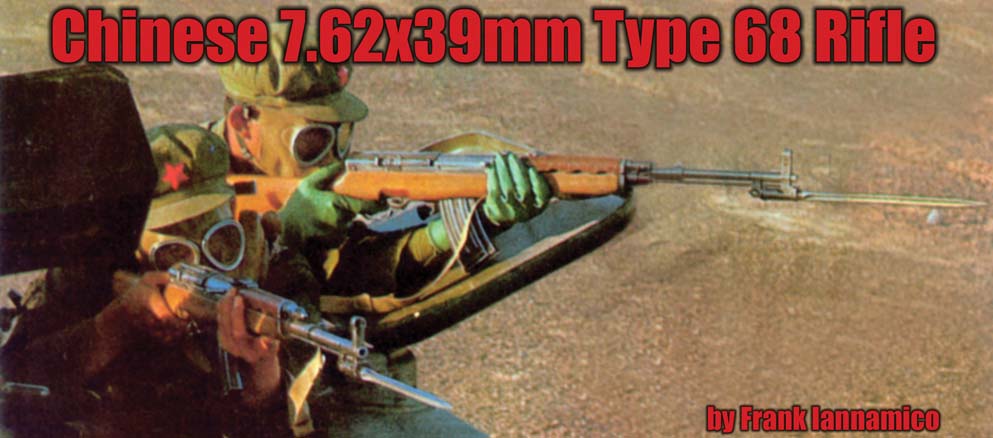By Frank Iannamico
Chinese troops wearing gas masks aim their Type 68 rifles during a training exercise.
During the 1920s China was embroiled in a civil war between the Chinese Communists led by Mao Tse-tung and the Chinese Nationalist Party (Kuomintang) who was led by Chiang Kai-shek. The fighting briefly subsided after 1937 with the Japanese invasion of China. During World War II, the United States became allied with the Chinese Nationalists and provided massive military and financial aid to help China fight the Japanese. The wartime plan of the U.S. was to assist China in becoming a strong ally and a stabilizing force in Asia after the war. When World War II ended, the Chinese civil war intensified, eventually resulting in a Communist victory in 1949. The Nationalist government left the mainland and settled on the island of Taiwan. Communist leader Mao Tse-tung renamed China the Peoples Republic of China.
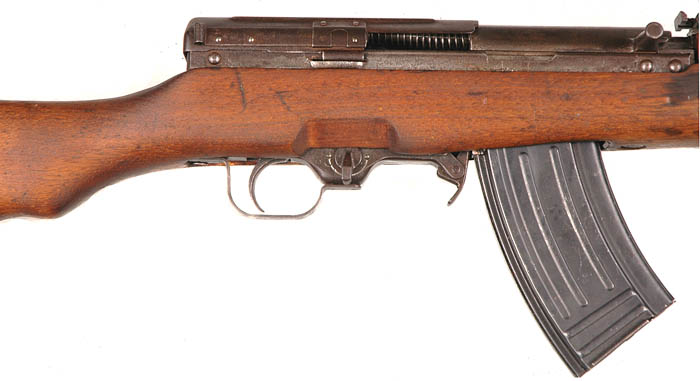
During the Korean War the Peoples Republic of China supported the Communist north and in October of 1950 sent troops in to assist the North Koreans in fighting the South Korean, NATO and U.S. troops. Ironically, many of the U.S. made weapons that were sent to China as military aid during World War II were fielded by the Chinese against U.S. soldiers and marines in Korea.
Soviet Post War Military Aid
The Soviet Union began a post World War II program to the assist the new Peoples Republic of China. The program primarily consisted of military aid that included many small arms, which the Chinese soon copied and started to manufacture themselves, with technical and financial support from the Russians. Most of the small arms were exact copies of the Russian weapons including the PPSh 41 submachine gun produced in China as the Type 50, the PPS43 as the Type 43, the SKS as the Type 56 carbine and the AK-47 as the Type 56 rifle. However, during the late 1950s the Russians and Chinese began to have differing national interests and political ideologies, resulting in a Sino-Soviet split by the mid 1960s. While many previous Chinese weapons were near exact copies of Russian models, evidence of design variations were observed after the Sino-Soviet split when the Chinese began to produce their own version of the Soviet stamped receiver AKM model. The Chinese version (still designated as the Type 56) differed from the Soviet AKM, and most eastern European copies, by having an 800-meter rear sight, smooth top cover, flat sided lower handguards, relief holes in the gas tube, flat muzzle nut, lack of a hammer delay system and a thicker sheet metal receiver. The stamped receiver Type 56 was followed by other era weapon designs that were uniquely Chinese, including the Type 67 machine gun, the Type 64 submachine gun, and the Type 68 rifle.

The Type 68 Rifle
While most Chinese infantry small arms of the twentieth century were copies of Soviet models, the Type 68 (sometimes referred to as the Type 63) rifle is an indigenous Chinese design. The weapon is somewhat of an anomaly; having a few “modern” features such as a select-fire capability and firing a midrange 7.62x39mm cartridge, but has the appearance, weight and length of an older World War II design.
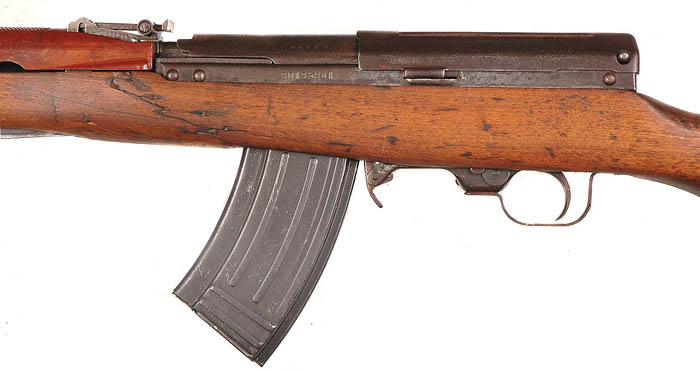
At first glance the Type 68 looks very much like an SKS rifle, the primary difference between the two designs is that the SKS uses a titling-bolt locking system, while the Type 68 features a rotating-bolt system similar to that of the AK-47 rifle. The SKS is a semiautomatic-only weapon while the Type 68 has a semiautomatic and full-automatic capability.

The gas system used on the Type 68 is an impingement design that is similar to that used in the SKS. While the SKS gas piston impinges on a spring-loaded gas piston extension, the Type 68’s piston rod impinges directly on the rifle’s bolt carrier. The piston rod extends through a spring that returns the piston to a forward position after engaging the bolt carrier. The gas piston is enclosed inside a circular sheet metal heat shield to protect the upper handguard from excessive heat during sustained firing. The Type 68 gas piston is not attached to the bolt carrier as on the AK-47, but is a separate component. The Type 68 has an adjustable two-position gas regulator located on the front end of the gas tube to keep the weapon functioning when extremely fouled. The gas regulator is adjusted by pressing the retainer and rotating it downward, which will allow it to be pulled free, and the regulator knob rotated to the desired position. The soldier can see the position of the gas regulator spindle, which is indicated by a small and large hole on the back of the knob, at a glance. The smaller of the two gas ports is the normal position. Like the Chinese Type 56 carbine (SKS) and some Type 56 rifles (AK-47), the Type 68 has a permanently attached spike-type bayonet. When not in use, the bayonet can be folded and stored under the barrel. To extend the bayonet the soldier pulls the grip rearward and rotates the blade forward locking it onto the L shaped lug under the front sight tower. To retract the blade, the grip is pulled to unlock the bayonet and then rotate it under the barrel until it locks into position. There is a barrel mounted front attachment point for a sling and a sling swivel on the buttstock: both are on the left side of the weapon.

The bolt carrier is a steel forging machined for containing the recoil spring, rotating and housing the breech bolt and tripping the automatic sear. There are also grooves on the sides that ride on rails inside the receiver. The cocking handle of the Type 68 is on the right side of the receiver and is an integral part of the bolt carrier; the handle itself extends straight out and is similar in appearance to that of the SKS rifle. A sheet metal cover is fitted over the top of the receiver.
The trigger groups of the SKS and Type 68 are similar modular designs, and are a variation of the basic design used on the U.S. M1 Garand rifle. The Type 68 has a three-position selector lever located on the right side of the trigger guard. The safe position is marked with a 0, the semiautomatic position with a number 1 and the full-automatic position is marked with a number 2. The stock is inletted in this area to aid in the manipulation of the selector lever. The Type 68 trigger group has three sears: an automatic sear is located forward of the hammer and is actuated by the bolt carrier, a trigger sear is located to the rear of the hammer on the right side and operates with each pull of the trigger, and a semiautomatic sear is located on the left side of the hammer and functions only when the selector is in the number 1 position.
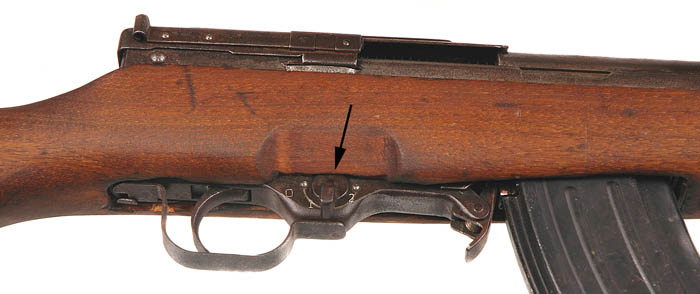
When the selector is rotated to the 0 or safe position, the selector blocks the movement of the trigger sear, preventing the release of the hammer.
With the selector on the number 1 or semiautomatic position, the selector moves the semiautomatic sear into position, which is then controlled by the trigger. When the trigger is pulled, the trigger sear releases the hammer. Upon firing, the rearward moving bolt carrier re-cocks the hammer and it is held rearward by the semiautomatic sear until the shooter’s finger pressure on the trigger is released, at which time the semiautomatic sear releases the hammer, but the hammer is retained rearward by the trigger sear until the trigger is pulled again.
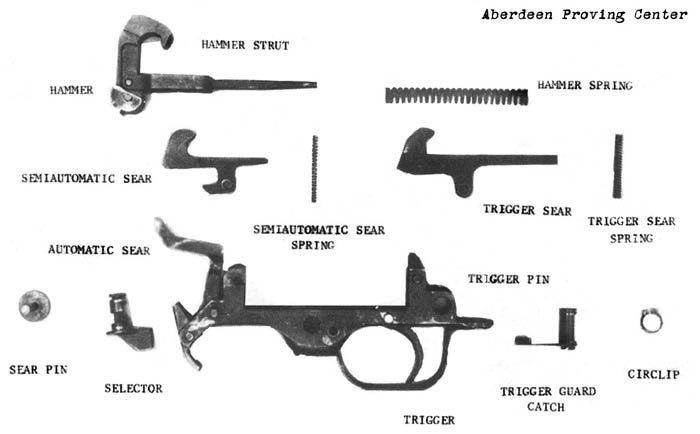
With the selector on the number 2 or full-automatic position, the semiautomatic sear is disengaged. When the bolt is initially released, the automatic sear is tripped but the hammer is retained by the trigger sear. When the trigger is pulled the hammer is released firing the round in the chamber. As the bolt carrier is pushed rearward by the gas piston, the hammer is cocked and held rearward by the automatic sear until the bolt carrier is in a forward position, at which time the bolt carrier trips the automatic sear and the hammer is released. This action will continue until the trigger is released or the magazine is emptied. If the trigger is released it will be held back by the trigger sear. The full-automatic cyclic rate is 750 rounds per minute. The automatic sear also serves a secondary function as a “safety” sear preventing the hammer from falling unless the bolt is locked in the battery position.
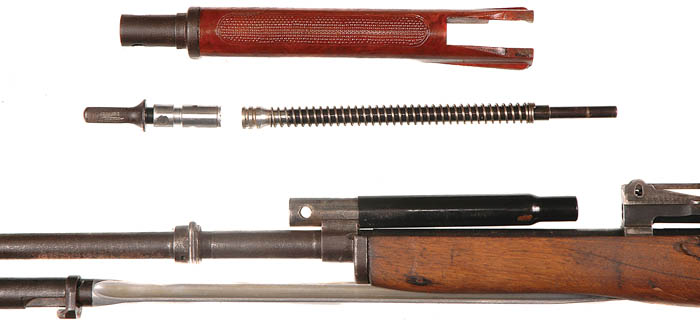
The Type 68 rifle uses a detachable steel box-type 15-round magazine similar in design to the standard AK-47 magazines. The magazine can be loaded while in the weapon through grooves in the bolt carrier with ammunition on SKS stripper clips, or removed and loaded by hand. The bolt hold-open feature of the weapon prevents the use of a standard AK magazine. If the bolt-hold feature is removed the weapon can then use any 30 or 40-round AK magazine to increase the weapon’s firepower. The magazine catch is placed forward of the trigger guard and is attached to the trigger housing.
The AK type elevation adjustable rear sight is a sliding bar, tangent type calibrated out to a range of 1,000-meters; the 300-meter battle sight position is indicated by a Roman numeral III. The front sight is also an AK post type adjustable for elevation and windage.
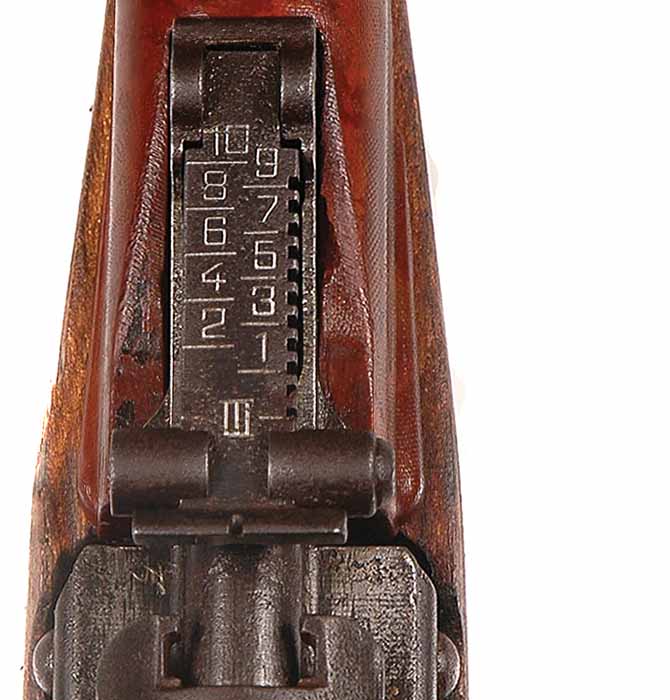
There are two variants of the Type 68. Early models had a forged steel receiver while later production used a stamped steel receiver. The stamped receiver is easily identified by the presence of rivets on the sides and is the model photographed for this article. Both models featured a wooden buttstock and were normally fitted with an upper handguard made of plastic. The buttstock has a stamped steel buttplate and is designed to house an AK capsule type cleaning kit, which contains a combination tool, gas port cleaning tool, jag, patch holder and bore brush. A cleaning rod is stored under the weapon’s barrel.
There have been reports of a simplified Type 68 rifle designated as the Type 68/73, but the existence of production models of the weapon could not be confirmed.

Specifications: Chinese Type 68 Rifle
Caliber: 7.62x39mm
Operation: Closed bolt, gas operated
Overall length: 40.5-inches
Barrel length: 20.5-inches, 4-groove right-hand twist
Loaded weight: 8.23 pounds
Magazine: Detachable box, 15 rounds, double-stack double-feed
(Some sources mistakenly state that the magazine holds 20 rounds.)
(A special thank you to Al Houde and Beth Crumbly of the U.S. Marine Corps National Museum, Triangle, Virginia.)
| This article first appeared in Small Arms Review V12N11 (August 2009) |



